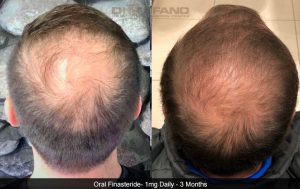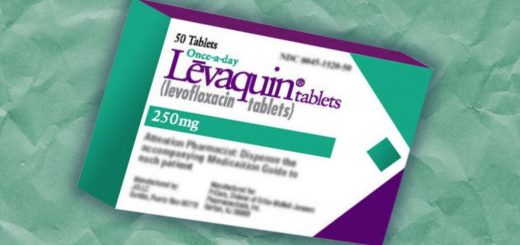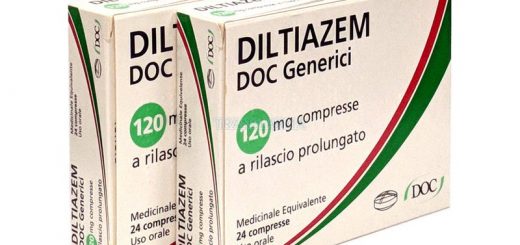Buy finasteride


Finasteride: Understanding its Side Effects and the Importance of Affordable Pricing
Finasteride, also known as Proscar or Propecia, is a medication prescribed for the treatment of benign prostatic hypertrophy and male pattern baldness. While it can be effective in treating these conditions, it is important to be aware of the potential side effects associated with its use.
Some of the rarer side effects of finasteride include feeling faint, edema in the extremities, fatigue and malaise, postural hypotension, and rhinitis or stuffy nose. It’s also important to note that taking finasteride can mask some of the symptoms of prostate cancer, so regular prostate examinations are necessary.
Perhaps most importantly, it is crucial that women never take finasteride. Finasteride has severe effects on a developing fetus, causing birth defects such as failure of genitalia to develop. Men taking finasteride are usually restricted from donating blood until a month after the last dose of the drug has been taken.
With this information in mind, it is essential that pharmaceutical companies and retailers work to ensure that finasteride is priced affordably. Patients who need this medication should be able to access it without undue financial burden. Offering discounts or other incentives can also help to increase demand for the medication.
In terms of marketing, finasteride is often promoted as a treatment for male pattern baldness. However, it is important for healthcare providers to fully educate patients on the potential side effects of the medication and to discuss any concerns they may have.
In conclusion, while finasteride can be an effective treatment for certain conditions, it is important to fully understand its potential side effects and the importance of affordable pricing. If you are considering taking finasteride, consult with your doctor and discuss any concerns you may have. And if you are in the pharmaceutical industry, consider ways to make this medication more accessible to those who need it.
Useful facts:
In addition to the potential side effects and pricing considerations, there are also some useful facts to know about finasteride.
One important fact is that finasteride does not prevent prostate cancer. While it may help with symptoms of benign prostatic hypertrophy, it does not reduce the risk of developing prostate cancer. It is important for men to continue to receive regular prostate cancer screenings even while taking finasteride.
Another useful fact is that finasteride is not recommended for use in women. As previously mentioned, it can cause birth defects in a developing fetus. Women who are pregnant or may become pregnant should avoid handling broken or crushed finasteride tablets.
It is also important to note that finasteride may take some time to see results. When used to treat male pattern baldness, it may take several months to a year to see a noticeable difference in hair growth. It is important to continue taking the medication as prescribed and to follow up with your doctor to monitor progress.
Lastly, it is crucial to take finasteride as directed and not to exceed the recommended dose. Taking more than the prescribed amount does not increase effectiveness and can increase the risk of side effects. If you miss a dose, do not double up on the next dose. Simply resume your regular dosing schedule.
Overall, finasteride can be a helpful medication for those experiencing benign prostatic hypertrophy or male pattern baldness. However, it is important to be aware of potential side effects, pricing considerations, and other useful facts to make an informed decision about its use. As always, it is important to consult with your doctor and follow their guidance.
- Finasteride is not a cure for male pattern baldness, but rather a treatment that needs to be continued in order to maintain results. Once treatment is stopped, any hair that was gained or maintained will likely be lost within a year.
- In rare cases, finasteride can cause a condition called post-finasteride syndrome (PFS), which can cause persistent sexual, neurological, and physical side effects even after the medication is discontinued. However, the incidence of PFS is believed to be very low.
- Finasteride can interact with certain medications, including blood thinners, and can also affect the accuracy of prostate-specific antigen (PSA) tests used to screen for prostate cancer. It’s important for patients to inform their healthcare provider of all medications they are taking before starting finasteride.
- In addition to oral tablets, finasteride is also available in topical formulations that can be applied directly to the scalp to treat male pattern baldness. However, these formulations have not been approved by the FDA and their safety and efficacy have not been well established.
- Women who are pregnant or may become pregnant should avoid handling crushed or broken finasteride tablets due to the risk of absorption through the skin and potential harm to a developing fetus. If a woman does come into contact with finasteride, she should wash the affected area immediately with soap and water.
Dosage
The recommended dose of finasteride for benign prostatic hypertrophy is 5 mg once a day, taken orally with or without food. For male pattern baldness, the recommended dose is 1 mg once a day, also taken orally with or without food.
It’s important to follow the prescribed dose and schedule provided by your healthcare provider. Taking more or less than the recommended dose may not improve your symptoms and could lead to unwanted side effects.
If you miss a dose, take it as soon as you remember. However, if it is close to the time of your next dose, skip the missed dose and resume your regular dosing schedule. Do not double the dose to catch up.
It’s also important to note that the effects of finasteride may not be seen immediately. It may take several months to see improvement in symptoms for benign prostatic hypertrophy and up to a year for male pattern baldness. It’s important to continue taking the medication as prescribed by your healthcare provider, even if you don’t see immediate results.
How to use
Finasteride is usually taken orally once a day, with or without food. It is important to follow your doctor’s instructions regarding the dosage and duration of treatment.
For benign prostatic hypertrophy, the usual dose is 5 mg once a day, taken at the same time each day. It may take several months of treatment to see an improvement in symptoms.
For male pattern baldness, the usual dose is 1 mg once a day, taken at the same time each day. It may take up to three months of treatment to see an improvement in hair growth, and continued use is necessary to maintain the effect.
If you miss a dose, take it as soon as you remember. However, if it is almost time for your next dose, skip the missed dose and continue with your regular dosing schedule. Do not take a double dose to make up for a missed one.
It is important to continue taking finasteride for as long as your doctor prescribes, even if you start to feel better. Stopping the medication prematurely may result in a return of symptoms. If you have any questions or concerns about how to take finasteride, be sure to consult with your doctor or pharmacist.







